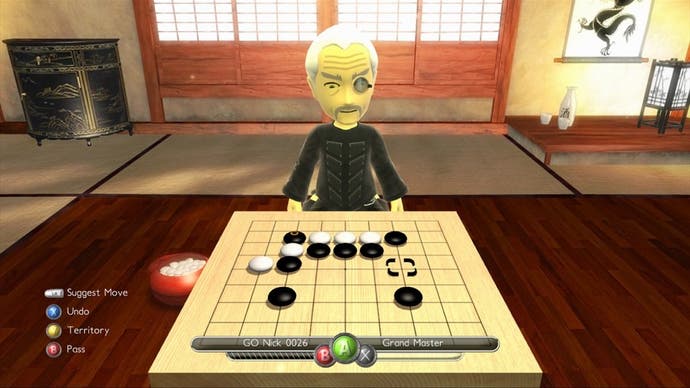Designing The Path of Go
Decisions, decisions.
"As training examples, we have a quarter million game records from professional players. What this has given us is a large number of training examples with each position, and then the next move that actually got made by a professional.
"Of course, not all the possible Go positions will turn up in these quarter million game records, so we have to be able to interpolate. So what happens is that the computer tries to learn the value of each move in each position.
"When a professional player makes a move, he's effectively telling the computer that the move he made is better than any of the other 200 or so moves he could have made. If we get enough of this kind of information, we can start to evaluate different moves, and learn what good moves are."
According to Graepel, it's essentially about data-mining. "The way we then use this is not to make the decision of which move to make, but to prune down the tree. Say there's 200 moves we can make in our specific scenario: we use our machine learning to prune down our options, because most of these moves, a professional player wouldn't even consider, right?
"Our system predicts that, prunes them out of the tree, and then suddenly only 20 moves are left, which makes it a lot easier for the computer to search through."
So how does Graepel, who characterises himself as an advanced Go player, rate The Path of Go as a an opponent? "I think it's getting closer to the human Go experience," he says. "But we're building on a lot of research from the computer Go community – stuff that's already been published and written about – so it's not the case that we've made a huge AI breakthrough here, where only we have contributed to it.
"I think it's actually quite amazing at times, though. When you've been involved in building something, and it makes a move that you didn't expect, or that defeats you, you get this funny feeling about having created something that can in turn surprise you."

What Graepel and his colleagues can take sole credit for, however, is solving the third and oft-forgotten social problem facing Go: the fact its ancient take on deep simplicity can make it a terrifying prospect for new players used to games in which the goal is far more obvious, and the tactics are a little more comprehensible.
With a surprisingly engaging single-player story mode tucked in alongside online and local multiplayer, The Path of Go will both teach the you the basic game from scratch, and key you into just a few of its hidden depths along the way.
And with a lovely tactile method of stone placement, a range of grand masters to play against, and the option to switch to larger board sizes, it's as complete a package as you could hope for. Achievements? Check. Avatar support? Check. Picture of a pagoda on the start screen? Check.
If that's still not enough to intrigue you, I asked Graepel for a few starter tips for anyone looking to get into this ancient and intoxicating game. "You mean other than getting yourself a copy of The Path of Go on the Xbox 360?" he replied, proving once and for all that having a doctorate in Physics doesn't mean you can't make it as a door-to-door brush salesman too.
"There are a few things. Firstly, play on a small board. Maybe even 7x7. That will reduce the complexity and really help you get your footing. The second thing is, it's good to have a good player explain it to you, but then to explore the game with another beginner. It's too frustrating to play against a strong beginner early on.
"Finally, there's a variant of the game called Capture Go, that's often taught to players first. It's a more fast-paced game, where the winner is the first to capture an opponent's stone. It reduces the complexity of the game much clearer and it allows you to focus on a simple goal. That's my favourite tool for teaching people to play."
Or, as Graepel puts it with a chuckle: "My favourite tool for teaching them the flow of the stones."








